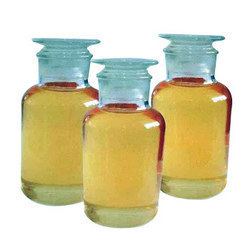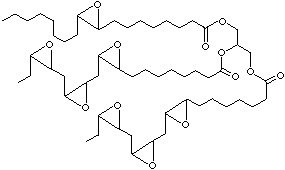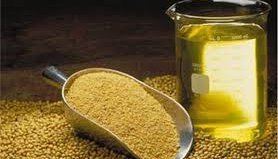Density 994 kg/m³ | ||
 | ||
Appearance Light yellow viscous liquid | ||
Epoxidized soybean oil (ESBO) is a collection of organic compounds obtained from the epoxidation of soybean oil. It is used as a plasticizer and stabilizer in polyvinyl chloride (PVC) plastics. ESBO is an yellowish viscous liquid.
Contents
- Global and china epoxidized soybean oil industry research report to 2020
- Manufacturing process
- Uses
- Food
- Legislation
- Toxicity
- References

Global and china epoxidized soybean oil industry research report to 2020
Manufacturing process

ESBO is manufactured from soybean oil through the process of epoxidation. Polyunsaturated vegetable oils are widely used as precursors to epoxidized oil products because they have high numbers of carbon-carbon double bonds available for epoxidation. The epoxide group is more reactive than double bond, thus providing a more energetically favorable site for reaction and making the oil a good hydrochloric acid scavenger and plasticizer. Usually a peroxide or a peracid is used to add an atom of oxygen and convert the -C=C- bond to an epoxide group.
Uses

Food products that are stored in glass jars are usually sealed with gaskets made from PVC. ESBO is one of the additives in the PVC gasket. It serves as a plasticizer and a scavenger for hydrochloric acid released when the PVC degrades thermally, e.g. when the food product undergoes sterilization.
Food

A Swiss survey in June 2005 showed that migration of ESBO into foods could reach up to 1,170 mg/kg. Rapid Alert System in Food and Feed (RASFF) had also reported cases of food product rejection in EU for exceeding SML under EU Legislation (EC/2002/72).
Legislation
In Europe, plastics are regulated by the Commission Directive 2002/72/EC which consolidates Commission Directive 90/128/EEC and its seven amendments (Directives 92/39/EEC, 93/9/EEC, 95/3/EEC, 96/11/EEC, 1999/91/EC, 2001/62/EC and 2002/17/EC). These amendments mainly modified the lists of authorized substances such as monomers and additives.
Directive 2002/72/EC establishes a specific migration limit for ESBO of 60 mg/kg. However in the case of infant formula and follow-on formula as defined by Directive 91/321/EEC or products containing processed cereal-based foods and baby foods for infants and young children as defined by Directive 96/5/EC, the SML is lowered to 30 mg/kg. This is because babies have higher ratio of food consumption per body weight.
Toxicity
The tolerable daily intake (TDI) of ESBO defined by the Scientific Committee on Food (SCF) of the EU is 1 mg/kg body weight. This value is based on a toxicological assessment performed by the British Industrial Biological Research Association (BIBRA) in the late 1997. Repearted oral administration had been shown to affect the liver, kidney, testis and uterus of rats. According to the conventional European rules for food packaging materials, the TDI became a basis for the SML of 60 mg/kg.
